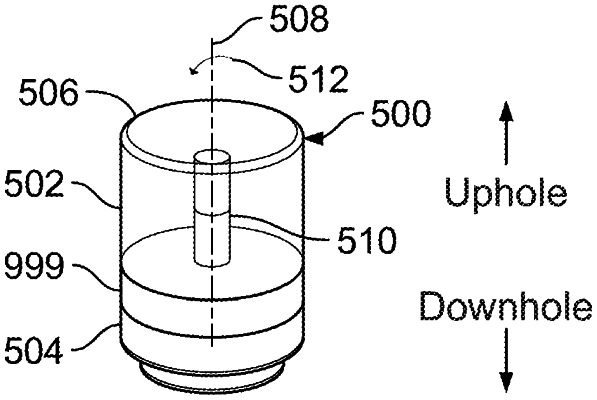| CPC E21B 47/092 (2020.05) [E21B 23/00 (2013.01); E21B 47/138 (2020.05); E21B 47/26 (2020.05)] | 37 Claims |

|
1. A downhole tool, comprising:
a body configured to move in a wellbore formed from a terranean surface to a subterranean formation in a direction downhole of the terranean surface independent of a downhole conveyance attached to the body;
one or more sensors, positioned in or on the body, the one or more sensors configured to measure a value associated with at least one of the wellbore or the terranean surface; and
at least one orientation component positioned in, or attached to, the body and configured to adjust an orientation of the body in response to one or more forces acting on the body as the downhole tool moves in the wellbore in the direction downhole of the terranean surface, the at least one orientation component comprising:
a first of the at least one orientation component comprising a buoyant portion positioned within, or attached to, a first location of the body at or near an uphole end of the body and configured to generate a buoyant force of the one or more forces acting on the body in an uphole direction;
a second of the at least one orientation component comprising a ballast portion positioned within, or attached to, a second location of the body at or near a downhole end of the body;
a third of the at least one orientation component comprising at least one magnet positioned within, or attached to, a third location of the body; and
a microcontroller that:
detects an immobilization of the downhole tool based on outputs of the one or more sensors, and
reduces, in response to the detection of the immobilization, a magnetization of the at least one magnet to reduce a pull force towards a casing.
|